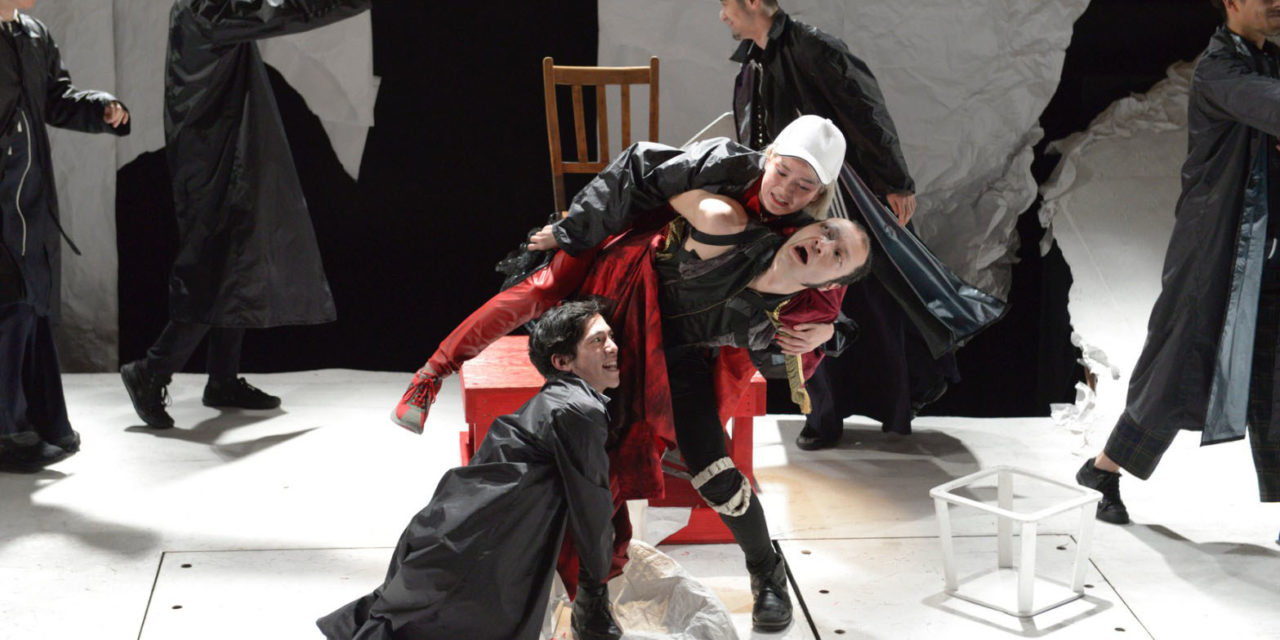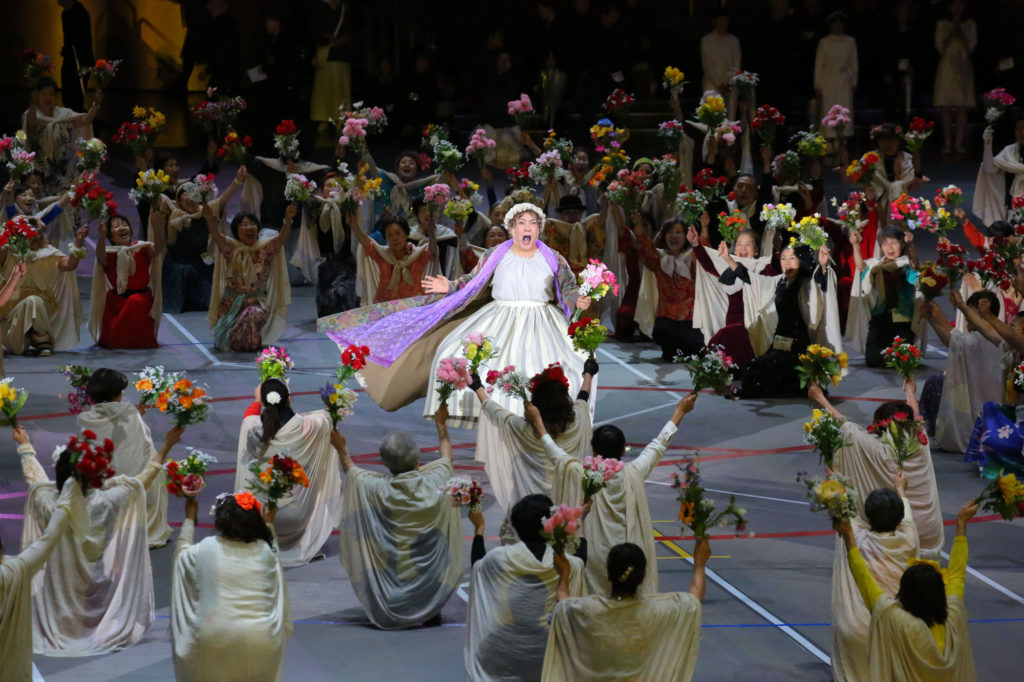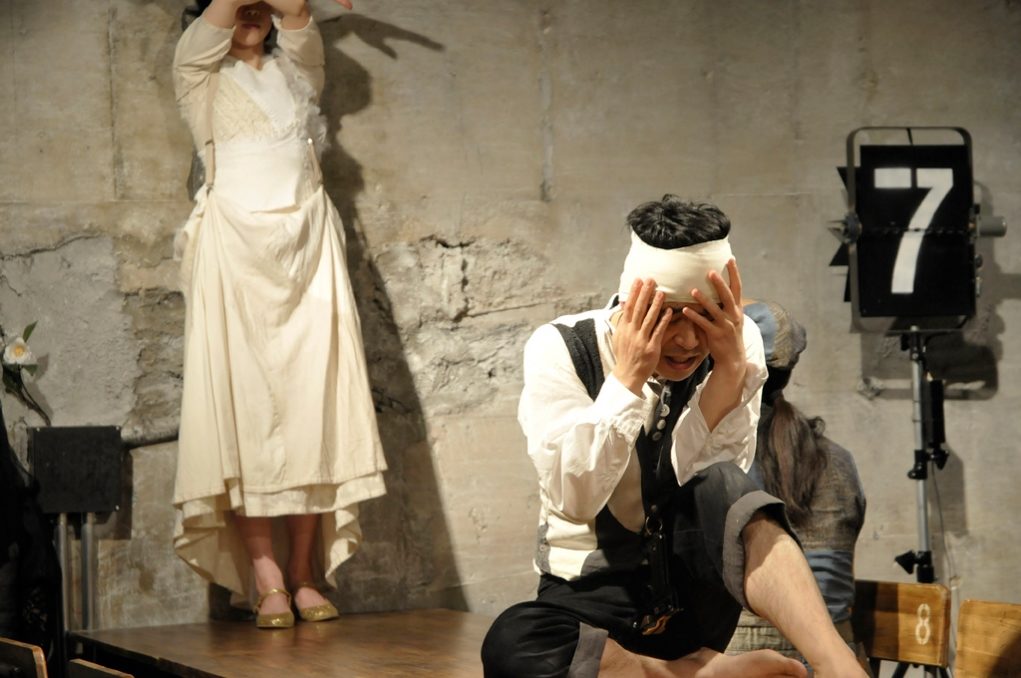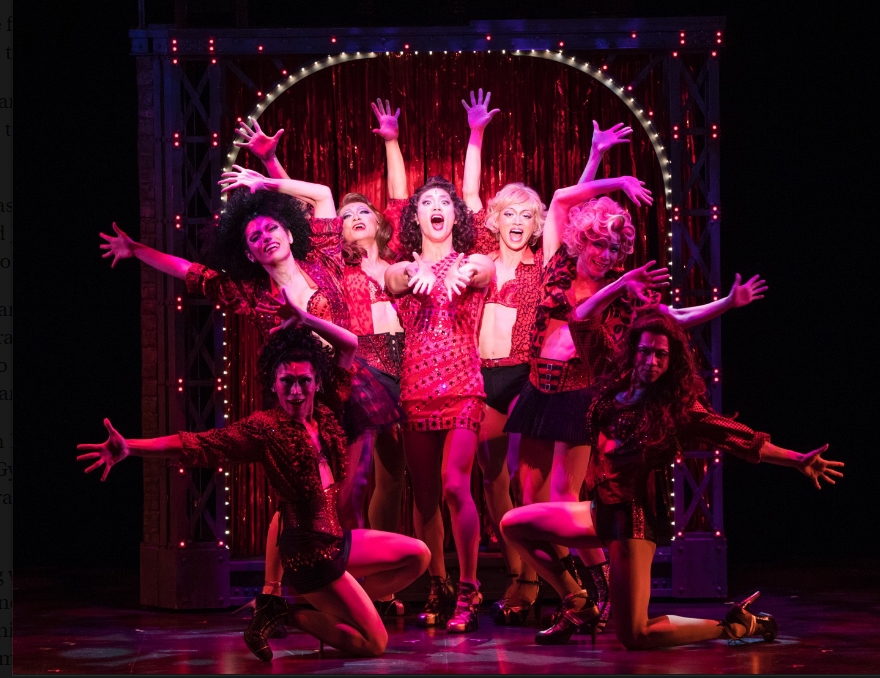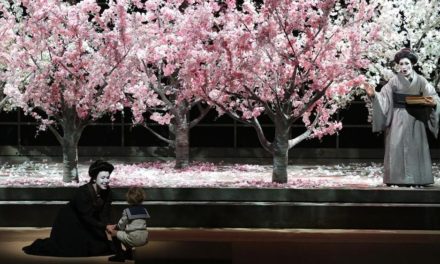From soccer minnows Leicester City winning the English Premier League to “That Election” in the (dis)-United States, 2016 has been a year of surprises, shocks and new directions.
In Japan, as is par for the five-ringed sporting circus, 2020’s upcoming Tokyo Olympics have been beset by blunders and squabbles over megabucks, even as the city got its first-ever female governor and “Pokemon Go” players scampered madly around with their smartphones.
Nonetheless, this year in theater both here and far beyond will surely be remembered for the sudden death of the great director Yukio Ninagawa, aged 80, on May 12. Although the loss of such a relentlessly driving creative force cast a dark shadow, many young Japanese directors and producers have responded with renewed energy to the artistic and scheduling voids he left behind.
As a result, several standout pieces, many grappling with current issues and looming problems, have since clearly reflected renewed quests for expression, interpretation and presentation. Besides these, other works more familiar in form and content were also, in this writer’s view, among Japan’s top theater productions in 2016. With it being the 400th anniversary of William Shakespeare’s death this year, his plays were staged even more than usual — though four productions especially stood out.
First and personally foremost was the playwright and director Takahiro Fujita’s Shakespeare debut, Romeo and Juliet, presented at Tokyo Metropolitan Theater in Ikebukuro just this month. For his take on the Bard’s most famous love tragedy, 31-year-old Fujita eschewed the lure of medieval trappings for a viscerally sad allusion to the lives of the many young Japanese who feel so pressured to conform that their hopes and dreams are — like Romeo’s and Juliet’s — ultimately crushed.
In his version of this classic from 1597, the top-drawer young dramatist — working apart from his Mum & Gypsy company this time — also changed some characters’ genders to great narrative effect, and to avoid it falling into a juvenile, love-story trap. Hence here, Romeo was a young woman (played by leading actress Izumi Aoyagi) who, along with her friend Juliet (Ellie Toyota), kicked back against social and gender dictates confining them — often literally in the shape of moving, wall-like boards that sometimes showed projected images — until such hardships drove them to their fate.
In another radical rethink, the play also opened with the Bard’s climactic scene depicting Romeo’s and Juliet’s deaths, then backtracked until it ended at the dance where they first met. Speaking in an exclusive interview, Fujita said he did that because he thought it was “more important to focus on the reason for, rather than the fact of, Romeo’s and Juliet’s deaths.” The end result, which pulsated with onstage drumming by Tatsuhisa Yamamoto, was a truly memorable and original “Romeo and Juliet” — while its sensitive stars’ doomed resistance sounded a strident alarm about the state of today’s Japan.
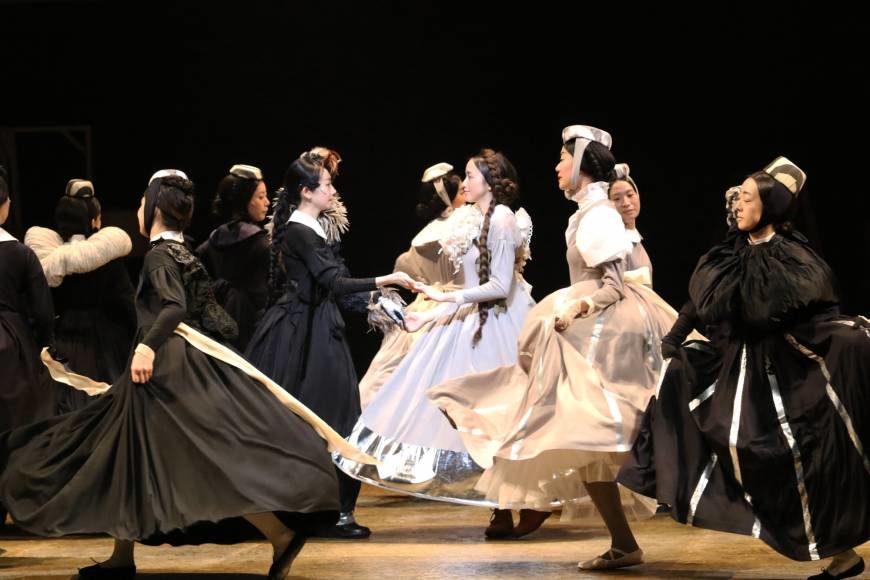
Takahiro Fujita’s Shakespeare debut, Romeo and Juliet, presented at Tokyo Metropolitan Theater in Ikebukuro. Photo credit Aki Tanaka
Meanwhile, the Saitama Arts Theater company, of which Ninagawa was artistic director, took over the huge Saitama Super Arena one day this month to present an altogether more down-to-earth version of Romeo and Juliet.
With its 1,600-strong cast drawn from open auditions held exclusively for applicants aged 60 and over, that work titled Gold Symphony, my dream, your dream saw actors passionately confessing their romantic longings in a play whose clear message was, “All you need is love.” As well, the cast members’ vibrancy and demeanor not only demonstrated their considerable abilities, but also celebrated and affirmed the place of seniors in an age so inclined to idolize youth.
At the end, indeed, the audience rose as one to applaud such a great production brought to the stage by 41-year-old playwright and director Seiji Nozoe, who stepped in following the death of Ninagawa, the project’s creator and its intended director.
In addition, special plaudits are owed a tour de force this year by the Tokyo-based Kakushinhan (meaning “Convinced Criminals”) theater company founded by Ryunosuke Kimura in 2012 to stage the Bard’s plays.
This time, every day over a month in spring at the cozy Fushikaden theater in the city’s Shinjuku district, Kimura — a former assistant to Ninagawa and student of directing at the mainstream Bungaku-za theater in Tokyo — presented both Richard III and also the Henry VI trilogy he’d ambitiously compressed from 10 hours into one 3½-hour play.
Known for his “Shakespeare is our contemporary” motto borrowed from the Polish theater theorist Jan Kott (1914-2001), Kimura, 33, duly brought loud recorded rock music and live drumming to both works.
With many of his young, punk-costumed cast acting multiple roles and switching genders, these spectacular and bloody history dramas sped by at a thrilling pace — with the small stage seeming to magically become an English battlefield at times. In particular, Yamato Kochi’s portrayal of a Richard III who was somehow charming, despite being twisted in both mind and body, was unforgettable.
Finally, even in this great year of innovative Shakespeare productions, very honorable mention must be made of the orthodox, full-length stagings of the epic historical dramas Henry IV, Part 1 and Henry IV, Part 2 by the New National Theatre, Tokyo.

Henry IV, Part I. Directed by Hitoshi Uyama. The New National Theatre, Tokyo. Photo credit Masahiko Yakou
Directed by 63-year-old Hitoshi Uyama, the NNTT’s former artistic director, these followed on from the company’s hugely popular, award-winning Henry VI trilogy and its acclaimed Richard III that he staged in 2009 and ’12 respectively.
As with those earlier works, this time Uyama again excelled at building into these plays first performed in 1600 a terrific sense of contemporary presence, exposing “post-truth” behaviors by the king, his barons and dukes that may even have shamed pro-Brexit campaigners in the U.K.’s referendum, or some candidates in the U.S. general election.
In these two NNTT gems, Uyama also presented his Prince Hal (the future Henry V, played by Kenji Urai) wearing a leather motorbike jacket and listening to Queen’s 1975 megahit “Bohemian Rhapsody” through headphones. As well, in two vivid and hilarious dialogues, we saw the prince receiving lessons in life from that intelligent but self-indulgent and somewhat sinister fool, Sir John Falstaff (B-saku Sato) — vignettes which, thanks to Sato’s sublime performance, were the icing on a casting cake featuring many top actors.
Moving next from one feast of theater classics to another, audiences this year were also served an astonishingly bold and clever dissection of Russian playwright Anton Chekhov’s 1895 masterpiece, The Seagull, by the Kyoto-based Chiten (Point) company directed by Motoi Miura.
Besides famously bringing the house down at the Globe Theater in London in 2012 with its Coriolanus performed by five actors armed with baguettes instead of swords, with Miura at the helm Chiten has repeatedly returned to Chekov’s four major plays since 2003 — including this version of The Seagull it staged in Russia in both 2014 and ’16.
Here, prior to the recent Tokyo premiere at the Kichijoji Theatre, the company created a wonderfully relaxed atmosphere by having an actress read a short report on the Russian audiences’ varied reactions as other cast members handed out cups of black tea to everyone in the auditorium.
Then when the play itself began, it was soon evident that 43-year-old Miura had, in his trademark way, extracted just the essence from the source material to present this complex tragi-comedy of romantic and artistic conflicts as a human drama at once familiar but utterly absorbing and relevant to audience members’ lives.
It also worked so well due to him pivoting his adaptation around the downfall of the confused young symbolist playwright Treplyov (Yohei Kobayashi), a sensitive but egocentric sort seemingly not too dissimilar from many of today’s spoiled and self-absorbed young people in Japan.
Additionally, though, this year has also been notable for musicals with all-Japanese casts, such as Grand Hotel and Jersey Boys, that have fostered a growing following and a core of fine charismatic performers
In particular, the Japanese version of Kinky Boots really swept audiences off their feet, and in both Tokyo and Osaka led to full-house standing ovations such as you get in ballet — but which are virtually unknown in theater in this country.
It was also great to see how that production compared very favorably with the U.S. version that played here this year, too — while the moving but colorfully entertaining performance of Haruma Miura in the role of its central character, the drag queen Lola, was surely the stuff of best actor awards.
Finally, as this year’s Nobel laureate Bob Dylan noted in his 1964 song “The Times They Are A-Changin’ “: “As the present now/ Will later be past/ The order is rapidly fadin’ …”
And yes, indeed, even in a world overflowing with manipulated information, it’s a sad fact that 2016 has seen the death of Ninagawa, and also that of the gifted founder of the avant-garde Ishinha (Radical Change) company, Yukichi Matsumoto, who passed away in June at the age of 69.
However, as there’s no way to stop the times from changing, those losses just make it even more important that creators and performers continue pushing the theater arts forward as their late, great forebears did.
And certainly, if the recent past is any guide, I for one am eagerly looking forward to seeing many more top-notch productions in 2017.
This article was originally posted on TheJapanTimes. Reposted with permission. To read original article, click here.
This post was written by the author in their personal capacity.The opinions expressed in this article are the author’s own and do not reflect the view of The Theatre Times, their staff or collaborators.
This post was written by Nobuko Tanaka.
The views expressed here belong to the author and do not necessarily reflect our views and opinions.

